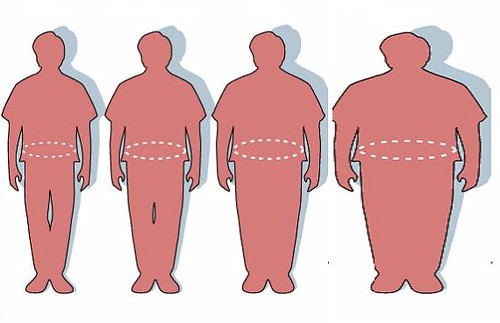? 
The headline in Tuesday?s USA Today was shocking: ?Obesity could affect 42% of Americans by 2030.?? That is nearly triple the rate experienced just three decades ago, according to an article written by Nanci Hellmich.?? At current rates, eleven percent of Americans could be ?severely obese, roughly 100 or more pounds over a healthy weight."
The findings come from a Duke University study presented at a meeting hosted by the Centers for Disease Control and to be published in the American Journal of Preventive Medicine.
The consequences for our health (and, for that matter, our economy) are quite serious.? Earlier this year I reported data on Type 2 diabetes, for example, which is obesity-related and has been rising at the same rate as body weight in the US for the last few decades.?  Diabetes is the leading cause of nontraumatic amputations, eye disease, and kidney disease, and is a major factor in the development of cardiovascular disease. Cardiovascular disease is the number one cause of death in diabetes patients.
Diabetes is the leading cause of nontraumatic amputations, eye disease, and kidney disease, and is a major factor in the development of cardiovascular disease. Cardiovascular disease is the number one cause of death in diabetes patients.
My fear is that we pay insufficient?attention to this disturbing trend because, like global warming, it has become more pronounced gradually and tends not to have sudden and dramatic consequences.? We get used to it.? But, unlike global warming, the environmental factors associated with the rise in obesity have not attracted the attention of the environmental community to any great degree.
As Dick Jackson -- one of the country?s top environmental health experts -- has been telling us for years, this needs to change.? There are all sorts of causes of the obesity epidemic, including of course poor nutrition.? But the downturn in physical activity because of the way we have designed our cities and suburbs -- for driving more than walking -- is also a significant factor.? There are studies showing that transit use is associated with reduced body weight, as is is the presence of shops and services within walking distance of the home.
? 
And now there?s more.? Nate Berg, writing for The Atlantic Cities, reported yesterday that a new study of automobile commuters has found that, the longer the commute, the more likely one is to have reduced fitness, increased weight, high cholesterol, and elevated blood pressure:
?The activity of driving to work should be better thought of as inactivity, and all that time sitting on your butt is slowly eating away at your cardiovascular health ? and probably adding to your waistline. Those who have farther to travel tend to see worse results according to the study, which will be published in the June issue of American Journal of Preventive Medicine.
?The study tracked 4,297 people who lived and worked in 11 counties in the Dallas-Fort Worth or Austin, Texas, metropolitan areas, and compared their commuting distances with various medical health indicators, including cardiorespiratory fitness, body mass index, and metabolic risk variables like waist circumference.
The longer the commute, the greater the likelihood these health indicators measure up on the fat and sick side of the scale. The researchers also found that people who drove longer distances reported doing less physical activity overall.?
Berg reports further that these associations were found even when the researchers controlled for individual characteristics such as personal physical activity habits and level of fitness.
Obesity, heart disease and diabetes are health problems, to be sure.? But they are environmental problems as well.? We know how to locate and design our communities so that we don?t need to drive so much and have more opportunities for walking in our daily routines.? The basic principles of smart growth point us in the right direction.? What we need to understand better is that following these principles -- which, incidentally, the market supports -- is important not just to reduce emissions and conserve land.? It can also save lives.
Related posts:
Move your cursor over the images for credit information.
Kaid Benfield writes (almost) daily?about community, development, and the environment.? For more posts, see his blog's home page.? Please also visit NRDC?s sustainable communities video channel.
luke scott tom benson royals nicole richie esperanza spalding lyme disease symptoms cardinals
No comments:
Post a Comment